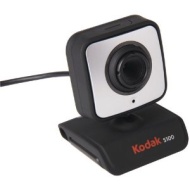

CCD size was 570x490 pixels on a 10x12mm chip.

Running off AA batteries, the Mavica stored pictures on two-inch floppy disks called Mavipaks holding up to 50 color photos for playback on a television or monitor. These analog electronic cameras were precursors to digital snappers in that they recorded images on to electronic media, but they were still technically recording analog data. Technically, the Mavica was a television camera that took still frames. However, it wasn't strictly a digital camera. This began in 1981 when Sony demonstrated a prototype Mavica (Magnetic Video Camera) model. The first cameras to use CCD sensors were specialist industry models made by Fairchild in the 1970s.īy the 1980s, handheld cameras began to ditch film. A CCD is a light sensor that sits behind the lens and captures the image, essentially taking the place of the film in the camera. The charged-couple device (CCD), invented in 1969, was the breakthrough that allowed digital photography to take off. Mario Ruiz/The Life Images Collection via Getty Images So the next step in the process would come from elsewhere. Some say Kodak missed a trick by not developing this technological breakthrough, as it chose to continue to focus on photographic film. It also took 23 seconds to snap the first digital photograph. Kodak's prototype had a resolution of 0.01 megapixel. Today's Apple iPhone 12 lineup has 12-megapixel cameras. It captured black-and-white images on a digital cassette tape, and Sasson and his colleagues also had to invent a special screen just to look at them. The resulting camera, pictured in 2007 on its first trip to Europe, was the size of a printer and weighed nearly 4 kilograms. He built a prototype ( US patent 4,131,919) from a movie camera lens, a handful of Motorola parts, 16 batteries and some newly invented Fairchild CCD electronic sensors. The first actual digital still camera was developed by Eastman Kodak engineer Steven Sasson in 1975. The first prototype digital camera, developed by Kodak's Steven Sasson. It wasn't until 15 years later that the digital camera became a reality. It was the same story 10 years later when Texas Instruments employee Willis Adcock came up with a proposal for a filmless camera ( US patent 4,057,830).

Lally actually figured out how to solve red eye in photos, but unfortunately his theory of digital photography was still way ahead of the existing technology.


 0 kommentar(er)
0 kommentar(er)
